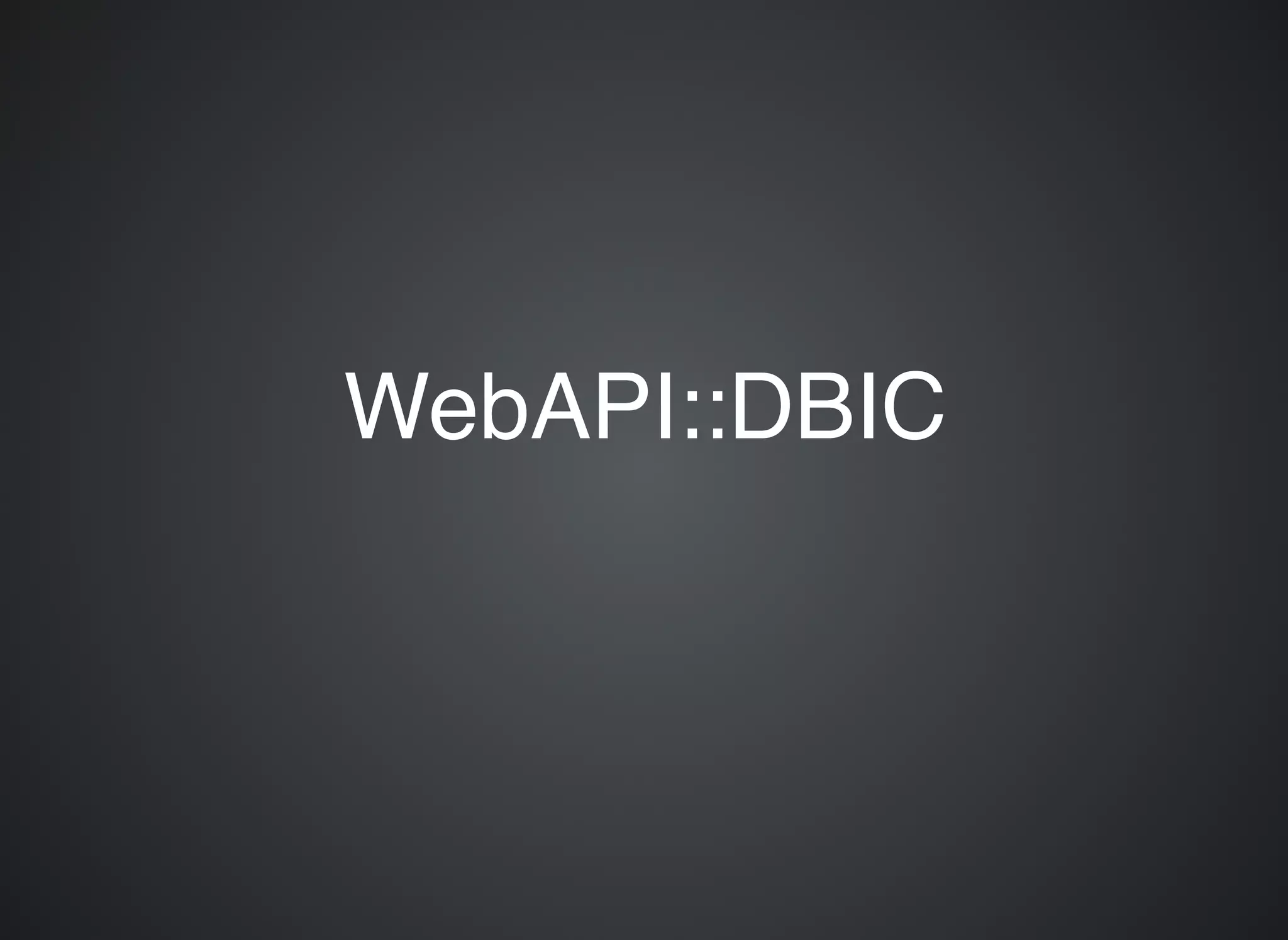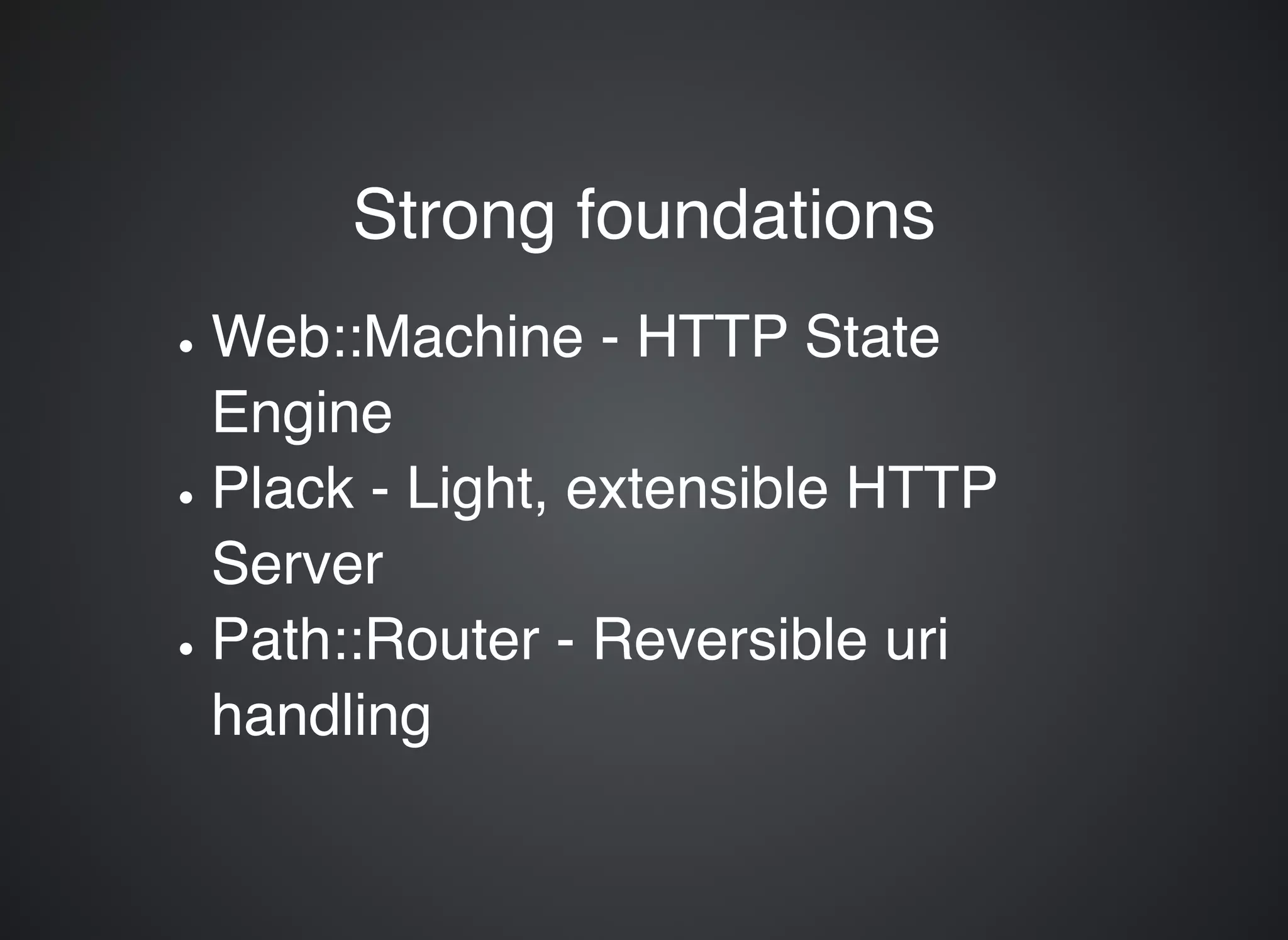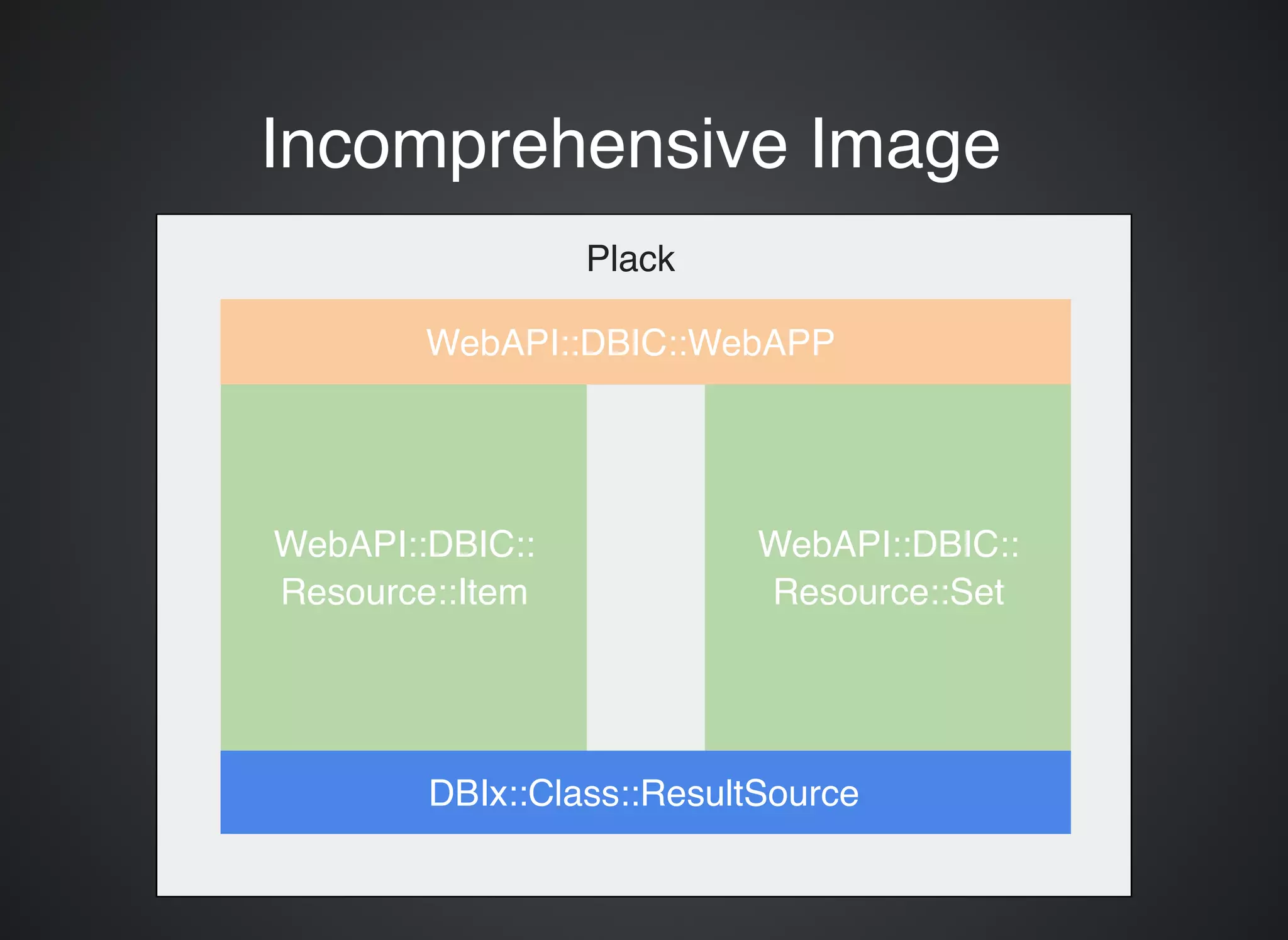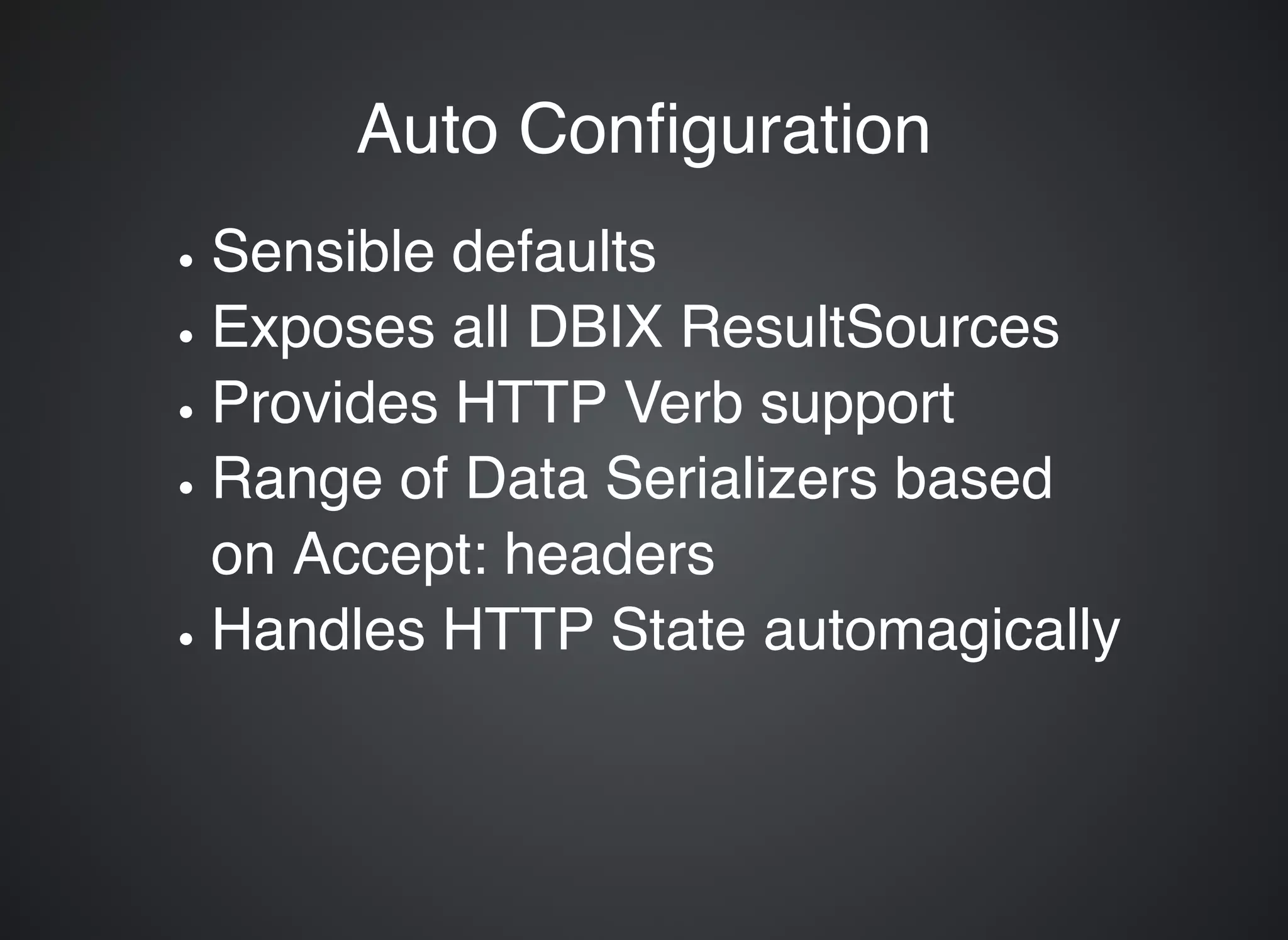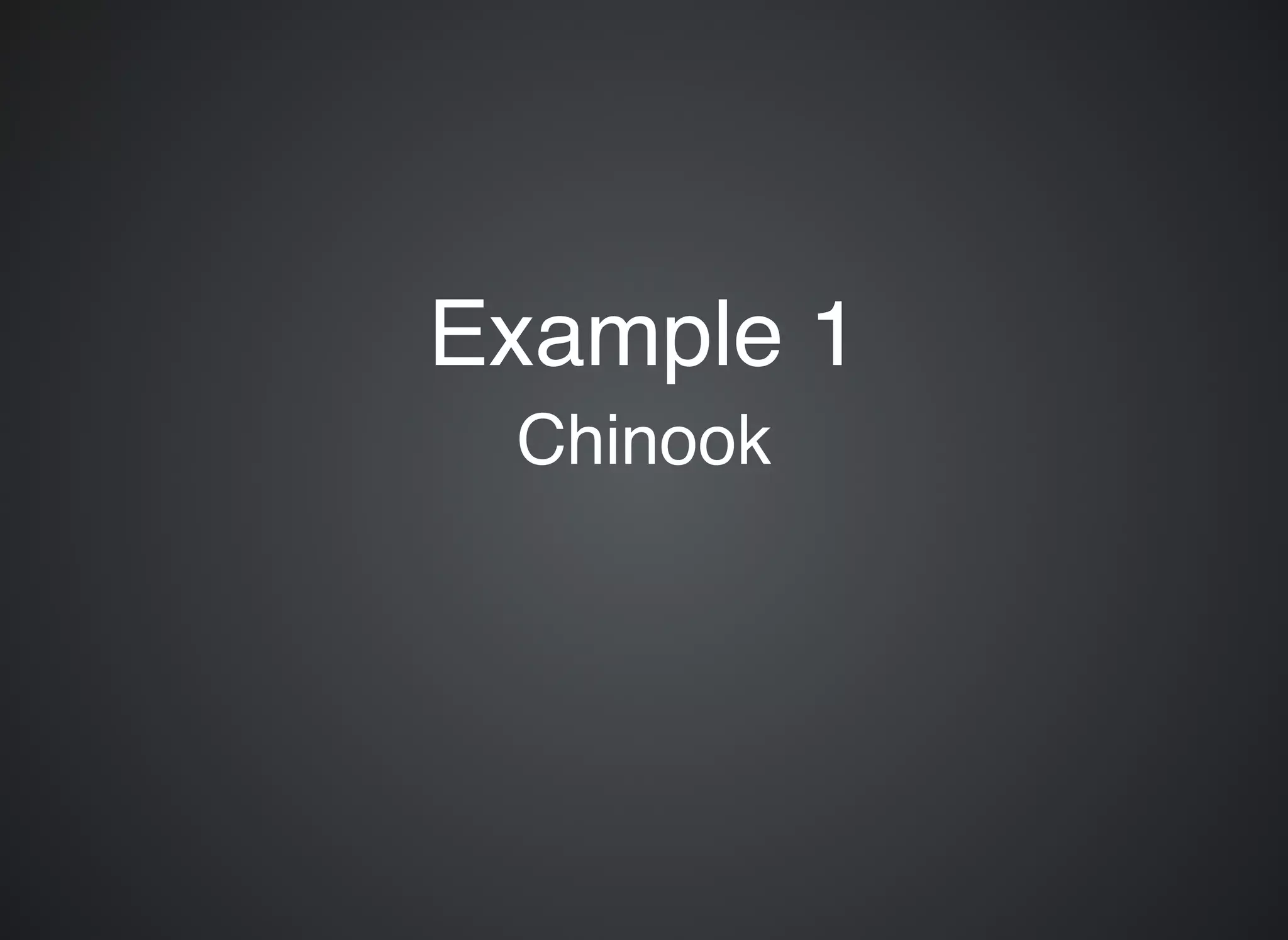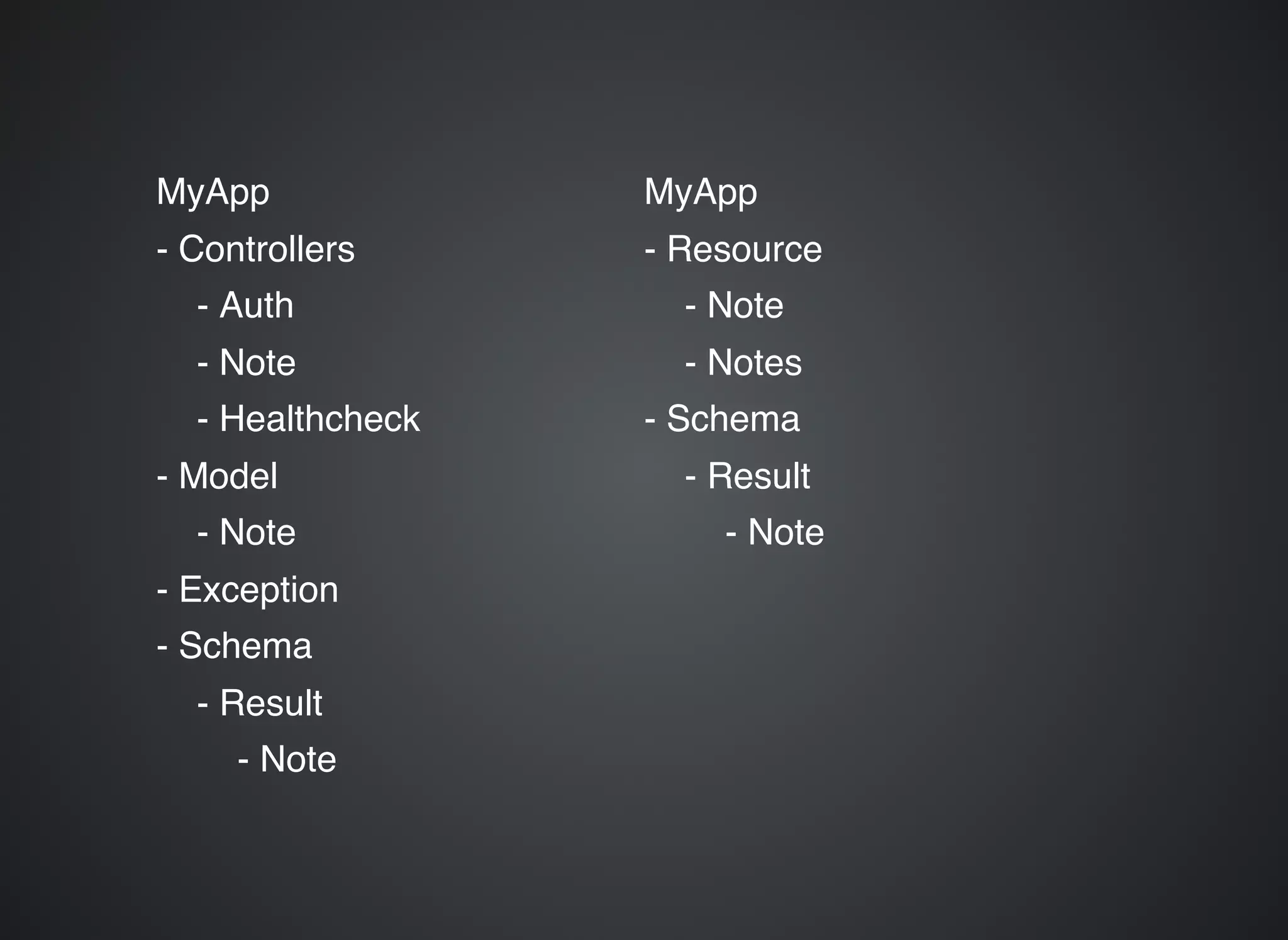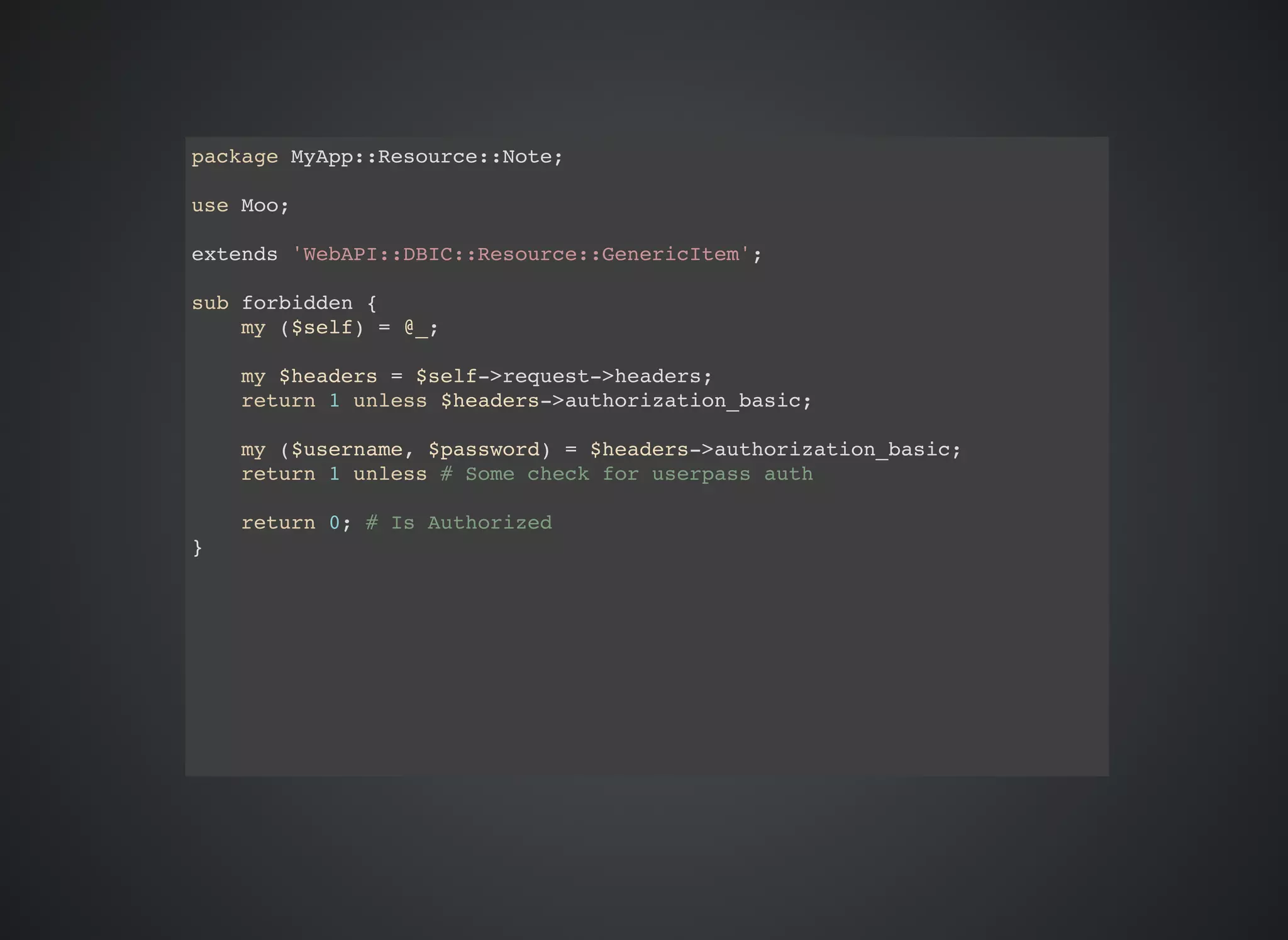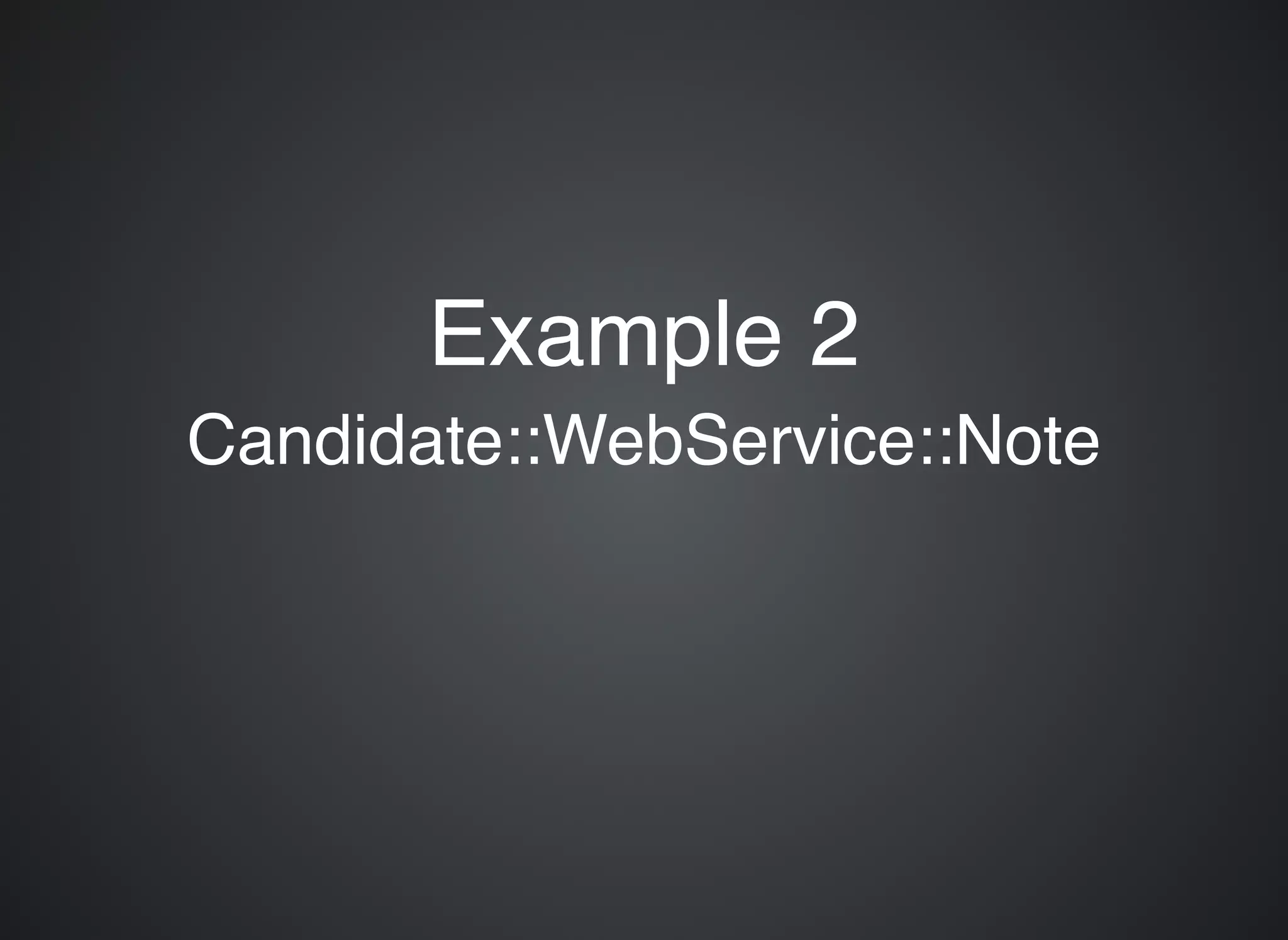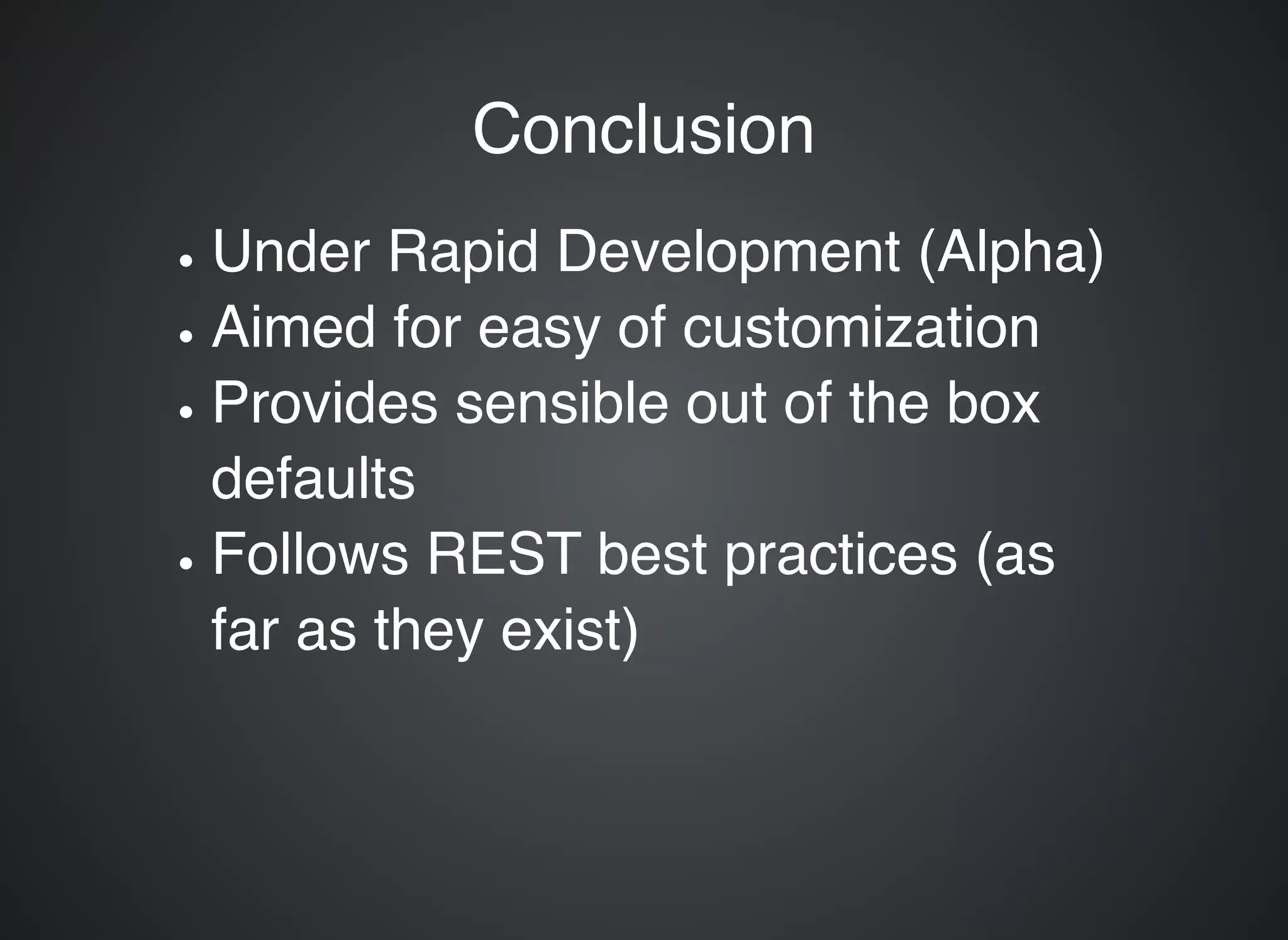This document discusses WebAPI::DBICWebAPI::DBIC, a RESTful toolkit built on top of DBIx::Class that provides a framework for building RESTful web services and APIs. It consists of Moo roles that handle sets and items as well as integration with Plack and DBIx::Class. The toolkit aims to provide sensible defaults while allowing for customization. An example application built with it demonstrates extending the generic item resource to add authorization checks. The document concludes that the toolkit is currently in early development.
